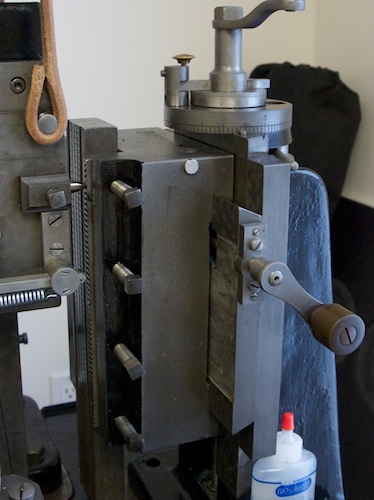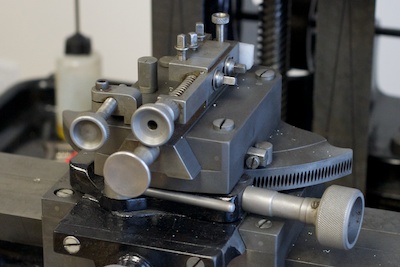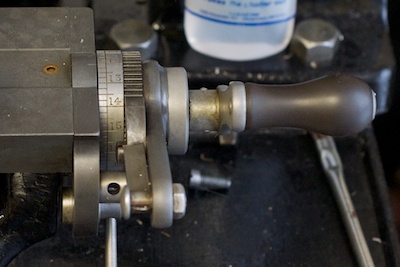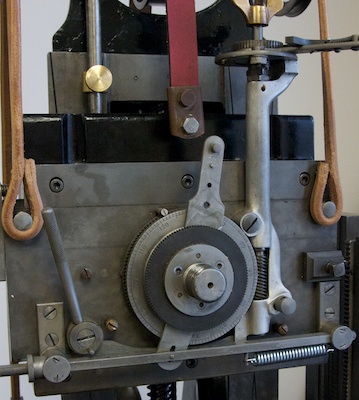As I discussed in my last post about engine turning, I am using a straight line engine in my work. This post will cover how an straight line engine works in more detail.
There were many variations of engines built, however, they all follow the same basic principles in their operation. There needs to be some sort of headstock to hold the work piece, and there needs to be a tool slide to secure the graver and the guide, which controls the depth of cut. As the head stock and piece are moved down, the graver is pressed into the material and cuts a line. A basic engine such as this is typically called a bordering engine, and was used for creating borders on picture frames. The variation in the patterns that a bordering engine can produce is very limited.
Most straight line engines have a few other critical features that allow them to create an infinite number of patterns. The first is a pattern bar holder. Pattern bars can be bolted in place, and using a few adjustments, can be changed to alter the final pattern that is engraved. It is important that the pattern bar holder is very sturdy, that it allows multiple bars to be held at the same time, and that the bar can be moved up and down independently from the headstock. My next post on engine turning will discuss the variations created through this important feature.
The tool slide on the Plant straight line engine has several important upgrades. The first is an index system for moving the graver from left to right. Using a ratchet and pawl system along with an adjustable stop, the cutter can be advanced by a known amount between each cut. Because the human eye is excellent at picking out flaws in repetitive patterns, it is critical to keep the spacing consistent from cut to cut. A radial adjustment is also a useful addition to the tool holder. If the work has a curved surface on the edge, such as the side of a case, it is important to keep the graver perpendicular to the surface that it is cutting. If the graver isn't perpendicular to the surface, one side of the cut will be deeper than the other.
The most important upgrade to the headstock is the radial adjustment. The most common system to allow radial adjustment of the piece is through a worm gear. The worm provides very fine control over how many degrees the piece is turned from one cut to the next. A further improvement is to add a ratchet and pawl system to allow indexed fine control over the radial movement. In the case of the 14" Plant, each notch on the ratchet wheel moves the piece 1/4 of a degree. The sunburst patterns created using this upgrade were very popular on cigarette cases and picture frames.
The next post on engine turning will discuss what pattern bars look like, and how variations in their use can lead to an infinite variety of patterns.



